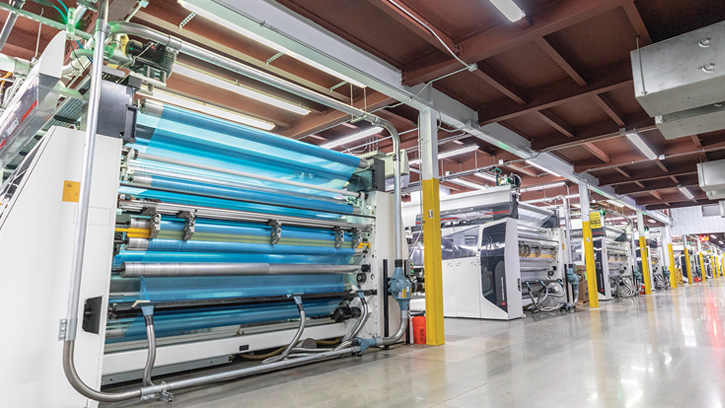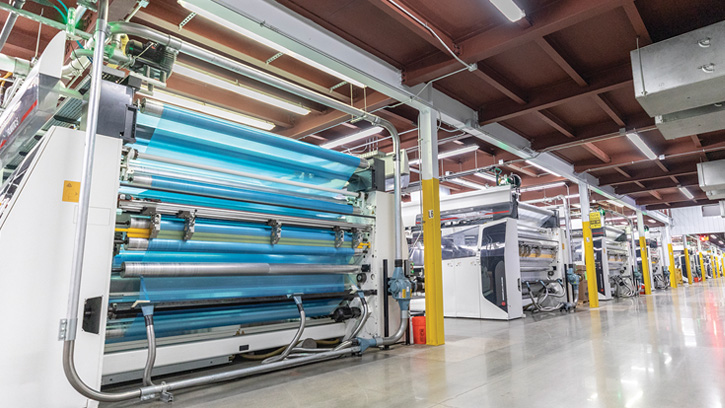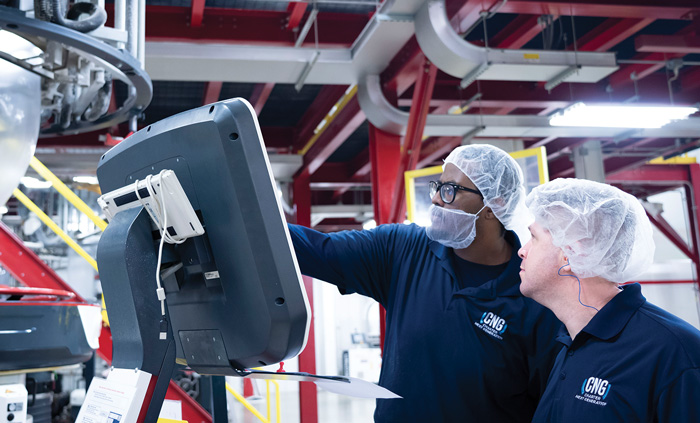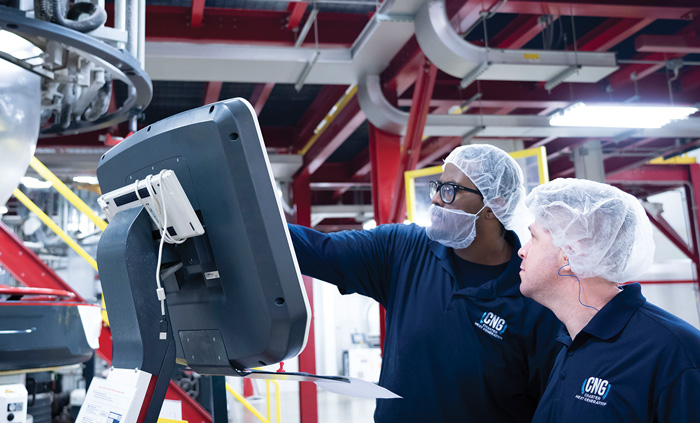Less Trash Talk: Recycling More Film and Paperboard Packaging
Packaging | APPLIED SCIENCE
Manufacturing polymers and paperboard from recycled content consumes approximately 70% less energy and emits less greenhouse gas than using oil and trees, significantly reducing the environmental impact of these types of food packaging. But historically, the recycling rates for film and paperboard have been problematic because these materials are often multilayer or include more diversity and are more challenging to collect than other food packaging such as glass, aluminum, and steel. So it’s good news that solutions involving material collection, recycling for a specific recycled content use, and advanced paper engineering are helping to boost recycling of polymer film and paperboard packaging.
Flexible polymer film usage has increased as a means of source reduction thanks to a polymer’s ability to provide functional oxygen and water vapor barrier using less packaging at a lower cost. Recycling rates for flexible film packaging, however, have lagged behind this growth due to the diversity of films and the logistics and economics of recycling film. Film commonly used in food packaging, for example, contains five main polymers—polyethylene (PE), polypropylene (PP), polyvinyl chloride (PVC), ethylene vinyl alcohol (EVOH), and polyethylene terephthalate (PET)—that are often indistinguishable to consumers for recycling. And the angled arrow symbols that denote polymer type are less common on film compared with rigid plastic packaging.
In addition, a polymer has variations, such as high, low, and linear low density, orientation, and different degrees of polymerization, which require different processing additives that affect the recyclability of polyethylene. Collecting, sorting, recycling, and using recycled content from flexible packaging is often economically unfavorable because a flexible package contains less material and has less recycled content value than a rigid package.
Paperboard used in food packaging requires a wide variety of options in printing, grease resistance, and hygroscopicity, which alters its recyclability. Paperboard is treated in the forming process using calendaring and coatings, and it contains distinct layers to allow for function barriers such as aluminum foil to be used in a composite structure. For example, an aseptic carton is composed of paperboard, aluminum, and polymer layers requiring specialized processes for separating layers and recycling. In contrast, paper-based bottles often contain polymer-based additives, adhesives, and binding agents within a structure rather than in layers, so the resultant structure is challenging to recycle because the different components are not readily separable.
Store Drop-Off for Recyclable Polyethylene Film
Progress toward more recycling of flexible packaging via store drop-off is advancing. Major brands such as Health Valley Granola Bars have addressed obstacles and shifted from a multilayer, nonrecyclable structure to a PE structure approved for store drop-off. And consumers can now drop off flexible packaging for recycling at retailers like Walmart, Target, and others. The collection of flexible packaging is also economically viable when materials are concentrated at specific sites where large populations of people discard packaging, such as hospitals, prisons, schools, and sporting venues.
Converting flexible packaging materials from multilayer structures into recyclable flexible PE, however, presents technical challenges and takes one to three years. Because of the inherent property differences between existing multilayer structures and store drop-off recyclable PE, the conversion process includes redefining:
- Production aspects. To compensate for lower tensile strength and melt temperatures associated with PE, the production speeds, sealing temperatures, and sealing jaws require alterations such as cooling sequences.
- Product reformulations. To compensate for a switch to a lower-barrier PE, preservatives may need to be added to maintain food shelf life.
- Logistics. To allow for shorter shelf life, the production run frequency, shorter production runs, and distribution dynamics should be considered.
- Finances. Higher material costs are associated with using more PE because a thicker layer of PE is required to mimic the mechanical properties of a thinner optimized multilayer structure.
- Environmental, social, and governance or similar analysis. The implications of using thicker PE vs. nonrecyclable multilayer but less overall polymer film must be assessed.
- Reclose features. To maintain a reclose feature with the higher degree of stretch associated with PE compared with other materials, sometimes the reclose feature needs to be switched. Many reclose features, such as Pepperidge Farms Goldfish crackers packaging, rely on the deadfold properties of paperboard. If this package were converted to a store drop-off PE, the current deadfold-based reseal feature would not function.
Localized Polymer Film Recycling and Reuse
The favorable economics and sustainability benefits of recycling film regionally, and then manufacturing new film with the recycled resin, are aiding efforts on the ground. A recently announced collaboration among the MBOLD coalition, film manufacturer Charter Next Generation, and film recycler Myplas USA, for example, exemplifies the critical push and pull needed to secure films for recycling and use the recyclate from the film on a regional basis. The collaboration includes a $9.2 million joint equity investment in Myplas USA by General Mills, Schwan’s, Target, Ecolab, and Charter Next Generation. Slated to be completed in spring 2023, the 170,000-square-foot Myplas USA recycling facility in Minnesota will be able to recycle 90 million pounds of low- and high-density PE packaging and film annually. In addition, Wisconsin-based Charter Next Generation has an off-take agreement to purchase the bulk of Myplas’ resin in the initial years of operation.
Although more than 12 billion pounds of plastic are used annually in the United States, only 5% gets recycled, according to JoAnne Berkenkamp, managing director of MBOLD. At the same time, demand for high-quality recycled resin is building as companies work to expand the use of recycled content.
“This is the challenge MBOLD and our partners are taking on with our new circular economy initiative,” says Berkenkamp. “By collaborating across the value chain from film recycler to film manufacturer to end-users, MBOLD is catalyzing a circular economy for flexible films in the Upper Midwest. We believe this is the beginning of a new model for regionally based circular economies.”
Improving Paperboard Recycling
Connecting recyclable paperboard to the end use of the recyclate is also critical for achieving increased paperboard recycling rates and recycled content use. As with polymer films, various additives enhance paperboard package properties. Foreign materials, such as other packaging materials and food scraps, are often commingled with paperboard for food packaging. Other contaminants, such as inorganic fillers, starch, wet-strength polymers, wax, and coating materials, require removal in the recycling process. These contaminants make the paper remanufacturing process more costly and affect the quality of the remanufactured paper, so not all paperboard is recyclable. Certification also is required.
Western Michigan University’s (WMU) Recycling Pilot Plant is one of two facilities in North America that certify the repulpability and recyclability of paperboard packaging. New paperboard enters the WMU facility through a series of steps involving physical screens, gravity-based separation, and chemicals to facilitate contaminant extraction. The suitability of paperboard made from recyclate is also assessed for mechanical and chemical properties. The WMU paperboard recycling pilot equipment employs a modular piping system that simulates different industrial-scale processes.
Developing paperboard that can be recycled more easily is also an area of much research at WMU. “Our research supported by the Department of Energy REMADE Institute focuses on ensuring that paperboard can be more readily recycled and that the quality of the recycled fibers provides an expanded array of options for their use,” says Kecheng Li, WMU Chemical and Paper Engineering Department chair and professor. “We develop enzyme-based technologies for removing stickies-related organic contaminants in recovered paper and for restoring and improving the quality of recycled fibers.” Li’s research also focuses on odor issues due to microbial growth during the recycled papermaking process.
Wrapping Up Recycling
In order for recycling rates and recycled content use to increase, the challenges of polymer film collection as well as polymer and paperboard contaminants need to be addressed. Bodies that govern direct food contact, such as the Food and Drug Administration, define the situation of use and the food that can directly contact recycled content. In addition, close adherence to the chain of custody and certifications ensures that both polymer film and paperboard recyclate contain only approved additives.
Learning Objectives
- Understand the challenges associated with recycling polymer film and paperboard.
- Learn about solutions to increase recycling rates and use of recycled content in food packaging.
- Assess research and the practical applications for food packaging.




